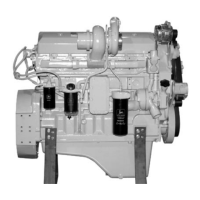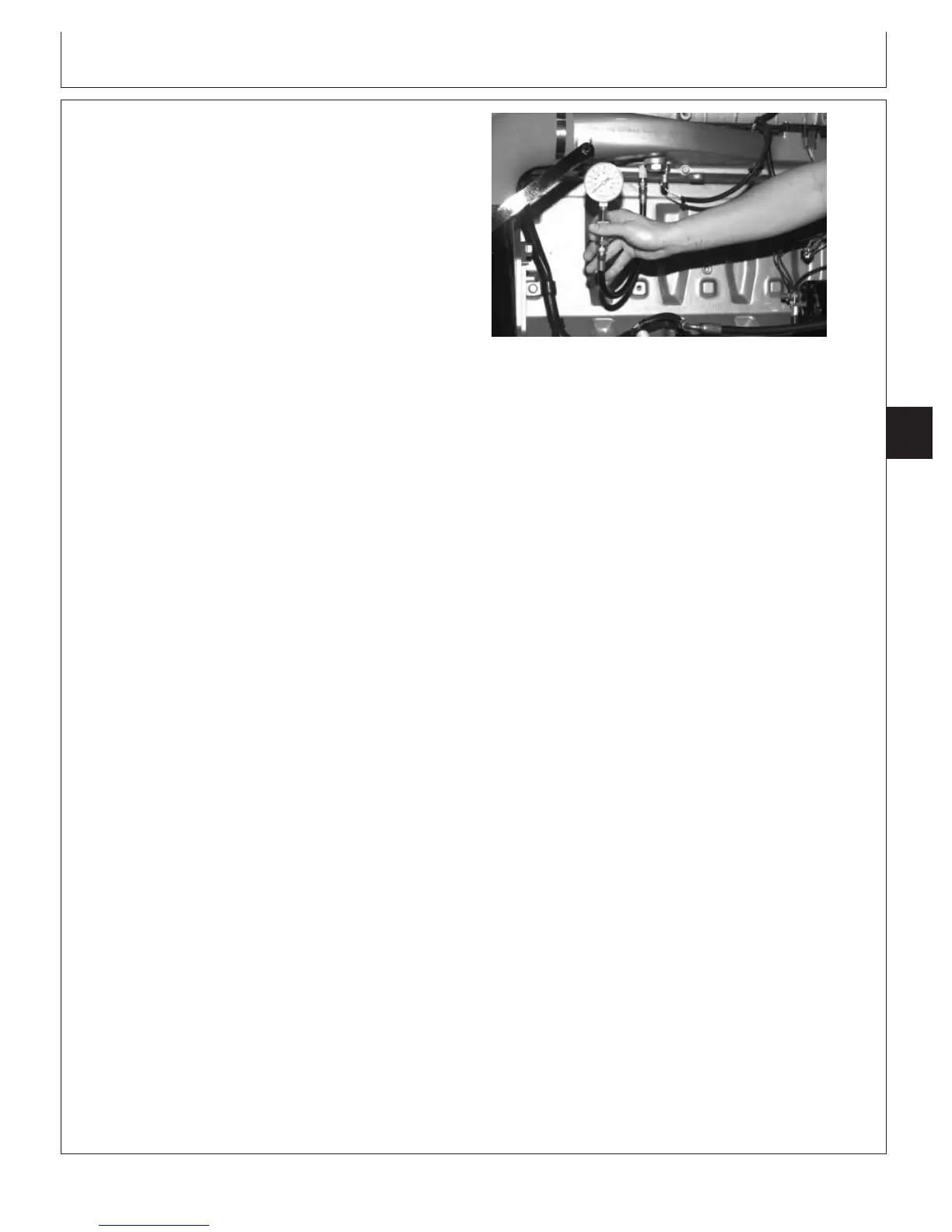Observable Diagnostics and Tests
04
150
19
RG,RG34710,1549 –19–24SEP02–1/1
Check Intake Manifold Pressure (Turbo
Boost)
RG8800 –UN–26NOV97
Measuring Intake Manifold Pressure
The preferred method of measuring intake manifold
pressure (turbo boost) is to use the Diagnostic Scan Tool
(DST) and read the Manifold Air Pressure (MAP)
parameter when engine is developing rated power at full
load rated speed. If the DST is not available, use the
procedure below to manually test intake manifold
pressure.
1. Remove ether starting aid assembly adapter or plug
from intake manifold cover, as equipped. Connect
pressure gauge to intake manifold using JT05412
Universal Pressure Test Kit. Be sure all connections
are tight.
2. Before checking boost pressure, warm up engine to
allow the lubricating oil to reach operating temperature.
IMPORTANT: Engine speed and load should be
stabilized before taking a gauge
reading. Be sure that gauge works
properly and familiarize yourself with
the use of the gauge.
3. Observe pressure reading on gauge. Compare reading
to the specifications when engine is developing rated
power at full load rated speed. See INTAKE
MANIFOLD PRESSURE (TURBOCHARGER BOOST)
SPECIFICATIONS in Section 06, Group 210 of this
manual.
If boost pressure is too low, check for the following:
• Restricted air filter elements.
• Incorrect fast idle adjustment.
• Exhaust manifold leaks.
• Intake manifold leaks.
• Low compression pressure.
• Carbon build-up in turbocharger.
• Turbocharger compressor or turbine wheel rubbing
housing.
• Restricted exhaust.
4. After completing test, remove test equipment and
reinstall plug. Tighten securely.
CTM100 (06APR04)
04-150-19
P
OWER
T
ECH
10.5 L & 12.5 L Diesel Engines
040604
PN=367

